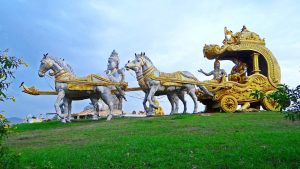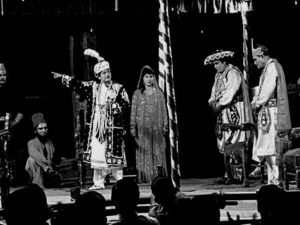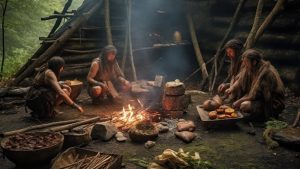Renaissance art was a period of cultural rebirth and artistic flourishing that occurred in Europe between the 14th and 17th centuries. It stands as a testament to human achievement, a time when artistic expression reached new heights, fueled by a resurgence of classical ideals and a thirst for knowledge and innovation. At this time of cultural rebirth, were the master artists whose works continue to captivate and inspire us centuries later. In this article on Renaissance arts, we will get a glimpse into the lives and legacies of these iconic figures and learn about their artworks and the impact they make.
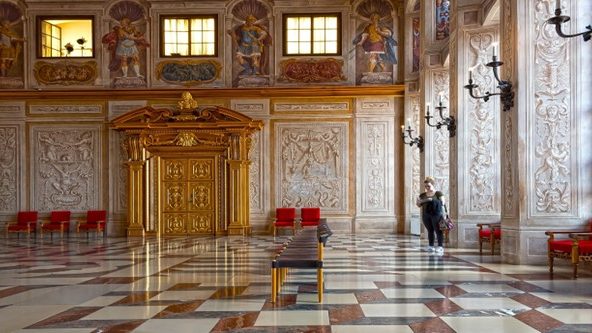
Chief Characteristics of Renaissance Art:
1. Humanism: Renaissance artists were inspired by the classical ideals of ancient Greece and Rome, particularly in their depiction of the human form. There was a renewed interest in capturing the beauty and complexity of the human body, as well as the emotions and expressions of individuals.
2. Realism: Renaissance artists tried to create lifelike representations of the world around them. They used techniques like perspective, proportion, and shading to achieve greater realism in their paintings and sculptures. This attention to detail gave their works a sense of depth and dimensionality.
3. Naturalism: Renaissance artists were interested in depicting the natural world with precision and accuracy. They studied anatomy, botany, and optics to better understand the forms and structures they were portraying, resulting in more realistic and detailed representations of landscapes, animals, and objects.
4. Individualism: Renaissance art celebrated the achievements and uniqueness of the individual. Artists were often commissioned to create portraits of wealthy patrons, religious figures, and historical figures, highlighting their distinct personalities and attributes.
5. Classicism: Renaissance artists looked to the art and literature of ancient Greece and Rome for inspiration. They incorporated classical motifs, themes, and techniques into their works, creating a sense of continuity with the past while also forging new artistic paths.
Overall, Renaissance art represents a remarkable period of creativity, innovation, and cultural exchange. It laid the foundation for many of the artistic movements that followed and continues to influence artists and audiences around the world today.
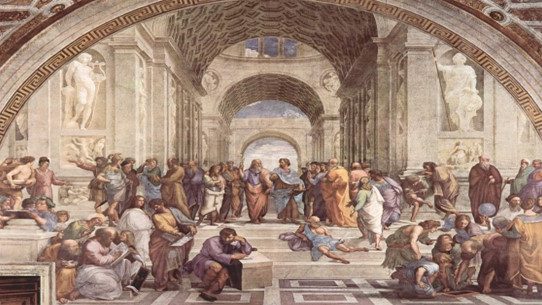
Masters and their Masterpieces:
Leonardo da Vinci, often hailed as the quintessential Renaissance man, embodied the spirit of curiosity and creativity that defined the era. Beyond his renowned paintings, such as the enigmatic Mona Lisa and the monumental mural The Last Supper, da Vinci’s insatiable thirst for knowledge led him to explore fields as diverse as anatomy, engineering, and astronomy. His notebooks, filled with meticulous observations and groundbreaking ideas, offer a glimpse into the mind of a true polymath, forever pushing the boundaries of human understanding.
Michelangelo Buonarroti, his name has become synonymous with artistic genius. Is best known for his awe-inspiring sculptures, such as the iconic David and the breathtaking Pieta, reveal Michelangelo’s mastery into painting and architecture. His work on the ceiling of the Sistine Chapel remains one of the most celebrated achievements in the history of art, showcasing his unparalleled skill in depicting the human form with grace and dynamism.
Raphael, the third member of the legendary triumvirate, brought a sense of harmony and balance to Renaissance art with his exquisite Madonna and frescoes. His ability to infuse his paintings with warmth and serenity earned him the title of “the divine painter,” reflecting the divine beauty he captured in his works. From the grandeur of The School of Athens to the intimacy of The Sistine Madonna, Raphael’s art continues to evoke a sense of wonder and admiration.
Lorenzo Ghiberti‘s masterful bronze doors, known as the Gates of Paradise, stand as a testament to his skill as a sculptor and his mastery of perspective and composition. Donatello’s revolutionary approach to sculpture, characterized by its naturalism and emotional depth, paved the way for future generations of artists to explore the human form in new ways.
In the realm of painting, Jan van Eyck’s meticulous attention to detail and innovative use of oil paints set new standards for realism and luminosity. His masterpiece, the Ghent Altarpiece, remains one of the most revered works of Northern Renaissance art, depicting his unparalleled mastery of the medium.
Giovanni Bellini, a master of color and atmosphere, transformed the Venetian school of painting with his beautiful landscapes and ethereal Madonna. His ability to evoke a sense of spirituality through his art reflects the profound influence of religion on Renaissance culture.
Andrea Mantegna, renowned for his bold compositions and mastery of perspective, pushed the boundaries of artistic expression with his dynamic and dramatic works. From his pioneering use of foreshortening to his innovative approach to narrative storytelling, Mantegna’s art continues to captivate audiences with its technical virtuosity and emotional intensity.
Collectively, these artists represent the pinnacle of Renaissance achievement, their works serve as living symbols of human creativity and ingenuity. From the grandeur of Michelangelo’s Sistine Chapel to the intimacy of Leonardo’s Mona Lisa, each masterpiece speaks to the timeless beauty of Renaissance art and its enduring relevance in our modern world. As we look at these masterpieces, we are reminded of the boundless potential of the human spirit and the transformative power of artistic expression.
ARTICLE BY – GAUTTAM SHAH | EDITED BY – SAHIL HARVANI

